Research Planning: What would we like to know?
In Design Decisions I outlined the 4 types of decisions I focus on in design projects - project definition, research planning, design analysis and concept development. This post focuses on research planning decisions.
By definition, a design or innovation project is fraught with ambiguity. You don't already know everything you'd like to know in order to make the best decisions going forward in your project. Design research is a tool that can cut through some of the ambiguity by uncovering previously unarticulated, concrete problems. These findings provide a platform and context for future decision making on a project. But because you probably can't afford to do all the design research you'd like to do - deciding what design research to do is a critical step in effective design decision making.
At IDEO I worked on a food packaging project. The client's goal was to create a differentiated, self-contained, on-the-go, off-the-shelf salad meal. As with pretty much any IDEO project we started with trying to understand the problem by conducting design research. I'll use this project as an illustration to describe how I like to decide what design research makes sense for a given project.
Develop an activity model
In order to decide what research to do, you first need to outline a rich set of questions, methods and research subjects to choose from. I like to create this outline by focusing on the end-user activities that need to be understood. I often find a timeline-oriented model is a great place to start. For example, here is a simplified version of the activity model we used for the salad project:
In reality each of these steps can be further divided but I've simplified it for illustrative purposes. As you can see, we looked beyond the “core experience” of actually eating a salad. Often it is this expanding of the scope of understanding that leads to an exciting idea. Keep in mind that the point of the activity model is achieve “coverage” of the topics to be understood. There are literally an infinite number of ways to look at an experience and there is no 100% correct way to frame an experience. The purpose of the activity model is to give you confidence that if you understood each of the activities in a rich and detailed enough way that you would likely uncover MANY problems worth solving in a user experience.
Identify research targets
Now the question is: Who should we talk to in order to learn about each of these activities? For each activity or phase described in the activity model the team should now brainstorm and discuss likely good sources of information for that activity. It is likely that some sources of information would be relevant to all the activities. This means you can cover many topics through a single research subject. It's also likely, however, that for one or more activities there are rich sources of information who are deep experts in just one of the specific activities.
For instance - in our salad packaging model we knew that office workers with short windows of time for lunch were likely great sources of information for all the activities in our model. On the other hand, in order to go deep on how people choose what kind of salad they want we decided to talk to a chef to learn how they design a menu.
Outline methods and questions
The third step in my research planning process is to identify specific questions and research methods to use that will elicit great information. The team must answer: for each activity and information source - what are some good questions and research methods to employ?
With the office workers we decided to shadow them on a typical lunch hour. We wanted to know the factors that go into deciding where and what to eat. We wanted to understand different types of lunch occasions - were some more social and others trying to be productive? How do different occasions change their decision making process? What was the last lunch they really enjoyed? What was great about it?
With our expert chef we attended a cooking class where we talked about menu planning and choosing the right recipes. We wanted to know what goes into the decision making process of planning a menu? Have they ever made big menu planning mistakes? Huge successes?
Decision time
So now you have created an "ideal" and “complete” research plan. If you were to conduct all this research you would theoretically be as informed as possible and you would be able to make better decisions on the project. It's usually unrealistic and probably not desirable to do all the research outlined. It could take months to ask every question of every type of user about every activity that is identified in the research planning model. The challenge is to use the model to select the likely most valuable research tasks.
It usually makes sense to think of the research as an iterative process. Pick the research tasks you think are most likely to produce the most valuable information and invest an appropriate amount in answering those questions. Revisit the research planning model when it makes sense or there are new areas that need investigation. Remember to also treat the entire model as a prototype - update the model as you evolve your understanding of the activities, research targets and important questions for your project.
This process has the potential to generate a very large amount of information. Invariably, most of it won’t be relevant to your project because it won’t be an illustration of a problem or opportunity to be solved. In my next post I’ll describe how I do Design Analysis - the decision making process I use to find the valuable information and translate it raw design research data into actionable insights for design.




